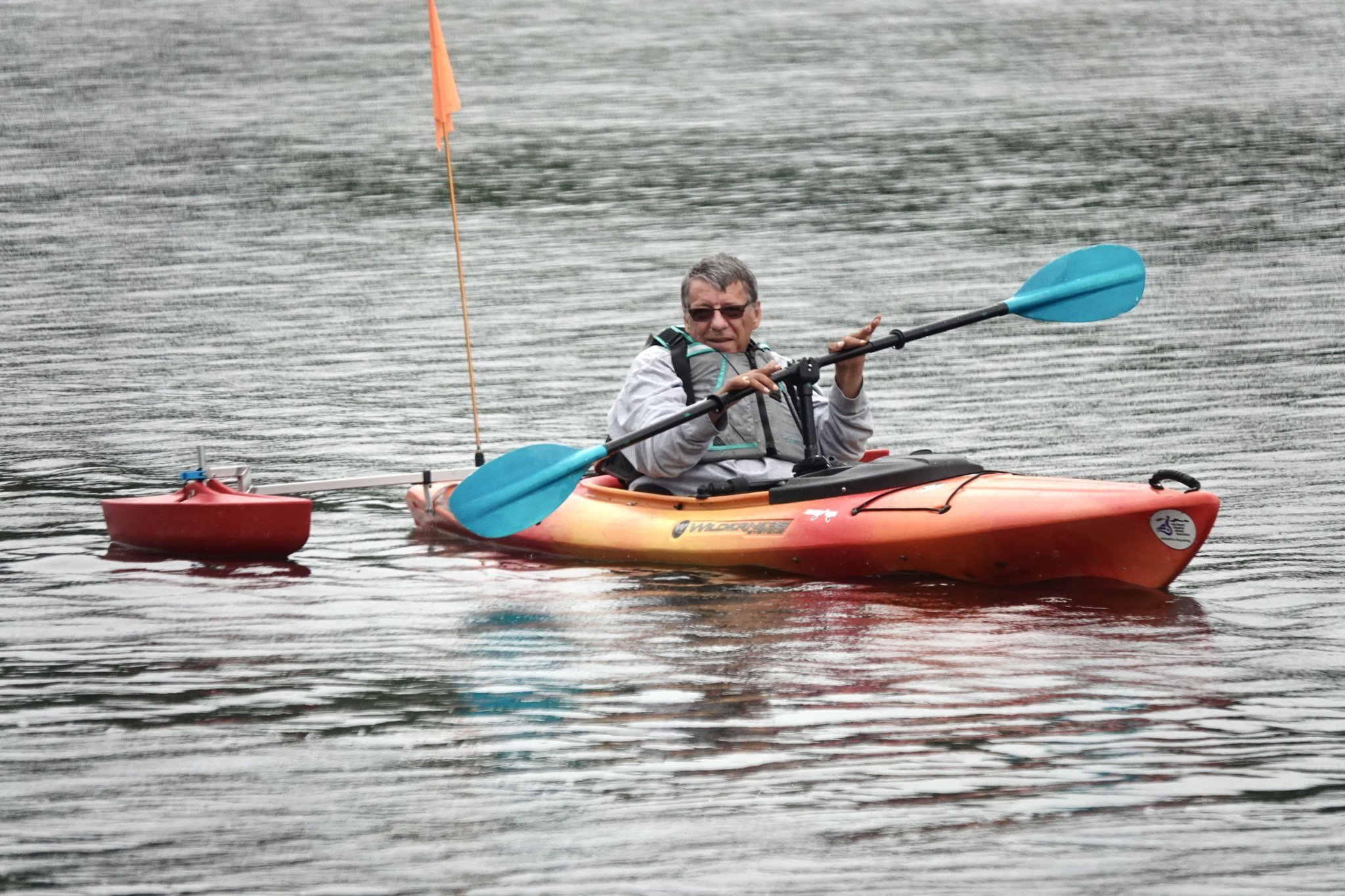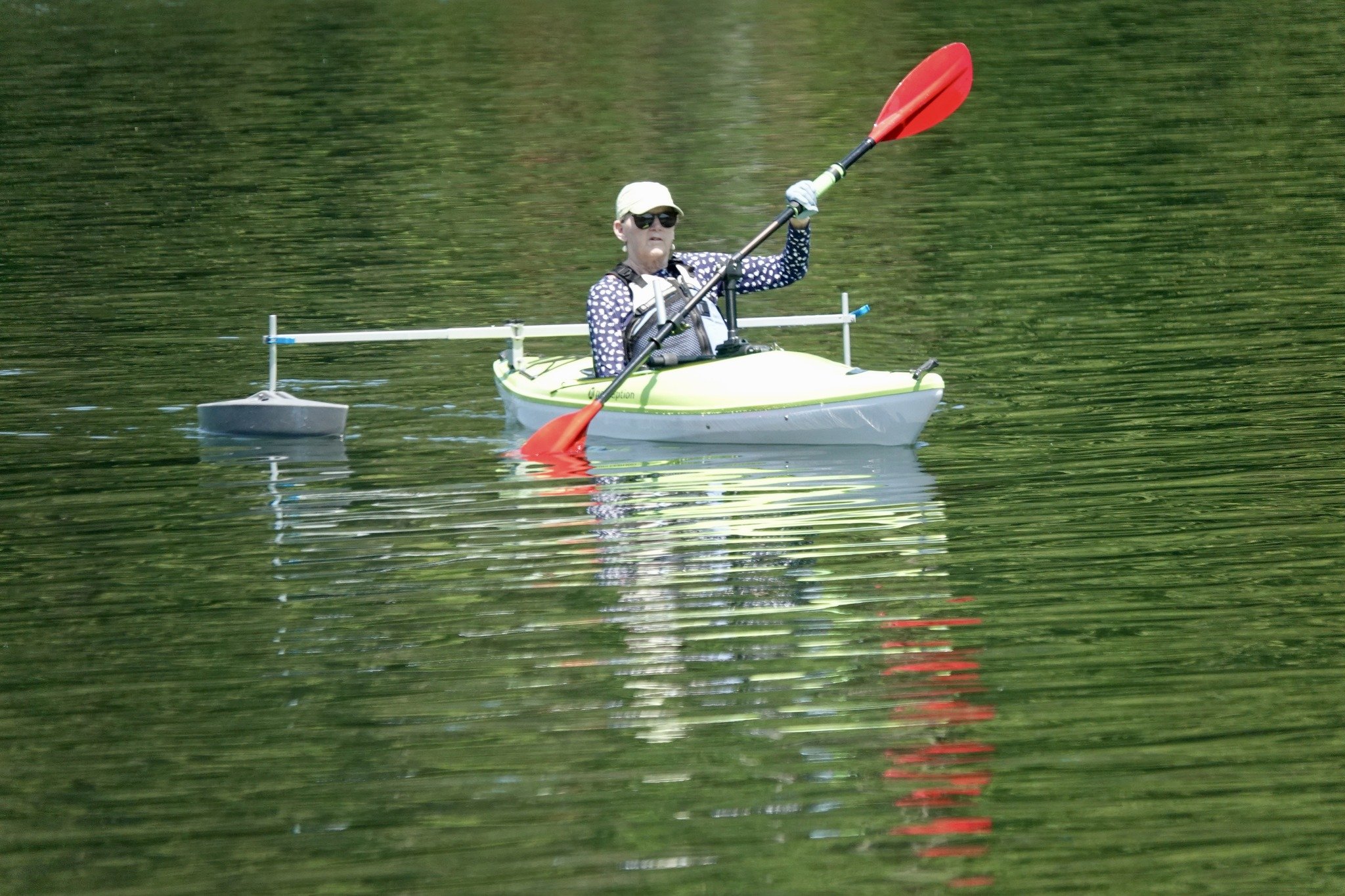Four Generations of Farming
Guy Goulet’s grandfather emigrated to Vermont from Quebec in the 1940s. His family, including a 3 year old son who became Guy’s father, came with him. After short stints in Lincoln and Jericho, the family purchased a farm in South Hero and set down roots.
Guy always knew he wanted to be a farmer. “My heart was always here,” he says. He met his wife Lori in 2013, at the Ford dealership where she worked and he had his pickup trucks serviced. They have six grown children between them, including Guy’s stepson Brad Isham, who works the farm with them.
Brad will be the next generation to steward this land, and he quotes the adage, “if you love what you do, you’ll never work a day in your life,” to explain how it just feels right to him.
A South Hero Farm Family Feeds Local Community
Building on the work of his parents (Guy Sr. and Brenda) and grandparents, Guy, Lori, and Brad have built a thriving farm business, growing high quality hay for the horse market and a vibrant market garden to provide fresh vegetables and fruits for a busy farmstand in Keeler Bay.
The stand grew out of a shared dream to feed their community, and has grown exponentially since opening in 2015. As Guy says, “we’ve met some real good people.” Lori continues, speaking of the relationships they’ve built, and how important it is to her to look out for folks who might be struggling, and make sure they go home with enough to fill their bellies. “It feels good to be able to help,” she says.
But the work of four generations faced the risk of vanishing into history when a critical part of their land base went on the market.
Long-time Supporters of Conservation Step In to Help
This is when their neighbors, Rob & Kathleen Swanson stepped in. A photojournalist, Rob first moved to South Hero in 1985. Soon thereafter he met Kathleen while on assignment at the Burlington Free Press, and together they raised their three daughters here.
The island community of South Hero—with its open spaces, working agricultural landscape, and people —is very important to the family and they credit the community for helping shape the values of their children.
Kathleen is a founding board member of the South Hero Land Trust and once co-owned a market and café in the village that sourced local products, while Rob continues to photograph the natural beauty of the Islands.
Two Families, One Farm, and a Dream for the Future
In 2020 ninety acres of land just to the north of the farm went on the open market. Those ninety acres had been leased and hayed by the Goulets, but now the land was at risk of being subdivided and developed. Kathleen and Rob understood what might be lost if they didn’t step in. A thriving farm that is critical to both food sovereignty and water quality in South Hero could disappear without enough land to make their business viable.
With this looming threat of a sale to a developer, the Swansons bought the property and promised Guy and Lori that they would do everything they could to make sure the land would be part of the Goulet farm forever.
When asked what it felt like to know that their neighbors would do this for them, Guy said simply, “they are family now.”
Since that day, the Swansons and Goulets have worked together—hand in hand—to piece together these fragmented properties to create a contiguous land base for a sustainable farm operation for the Goulets.
Conservation is the Critical Final Step
When asked about the future of this land, Guy wants it to stay a farm forever. Four generations of his family have worked this land, and made this farm what it is today. “We are tied to it,” he says.
Conservation is the final step in making this future possible. While the Swansons and Goulets, working together as neighbors, were able to prevent the land from being sold for development, only conservation will ensure permanent protection, keeping this land a thriving family farm for generations to come.
And this is where South Hero Land Trust and the Vermont Land Trust have stepped in to help. We are working together to protect the land with a conservation easement, which will permanently protect 195 acres of farmland, securing a critical landbase for the Goulet Farm long into the future.
To do this, we need to raise $1,593,500. The great news is that we were able to secure $918,000 from the Vermont Housing and Conservation Board in May, and the Goulets are offering a bargain sale which reduces the project cost by 271,500. We are now working to raise the remaining $350,000 locally.
Over the next six months, we will be working with South Hero Land Trust supporters and community members to raise this final amount. We will all need to come together to protect this special South Hero farm, and ensure that the Goulets are able to continue caring for the land, feeding our community, and protecting water quality in Keeler Bay for long into the future.












































